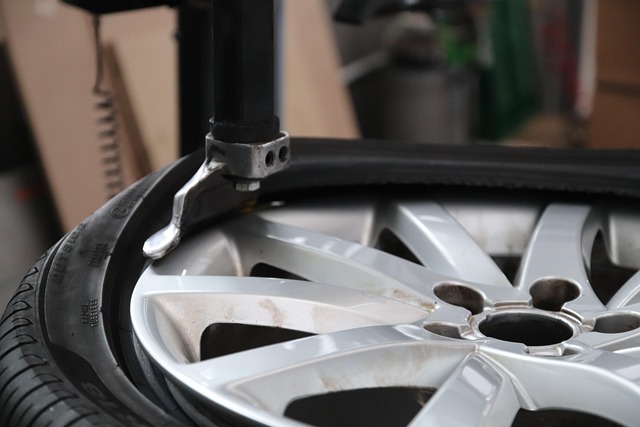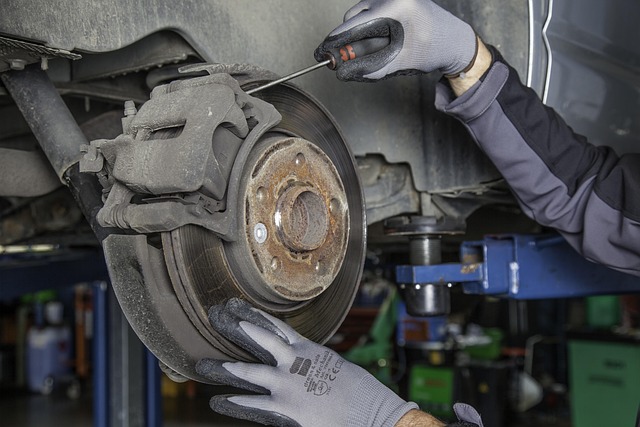Mercedes EQ Battery Protection: Why It’s Crucial for Your Electric Future
Mercedes EQ battery protection is crucial for electric vehicle (EV) owners, safeguarding high-voltag…….
Welcome to an in-depth exploration of a critical aspect of the automotive industry’s evolution—Mercedes EQ battery protection. As electric vehicles (EVs) gain unprecedented popularity, ensuring the longevity and safety of their most vital component, the battery, has become paramount. This article aims to unravel the complexities of Mercedes EQ battery protection, shedding light on its purpose, development, global impact, and future prospects. By delving into these aspects, we will empower readers with a comprehensive understanding of this essential technology in shaping a sustainable and efficient transportation future.
Mercedes EQ battery protection refers to the suite of systems, technologies, and strategies employed to safeguard the high-voltage lithium-ion batteries used in electric and hybrid vehicles produced by Mercedes-Benz (or Mercedes EQ, as branded for their electric vehicle line). These batteries are not merely power sources; they are the heart of the vehicle’s performance, efficiency, and environmental friendliness. Given the sensitivity of lithium-ion chemistry and its potential risks, protection systems have become an integral part of modern EV design.
Core Components:
Battery Management System (BMS): This is a sophisticated onboard computer that monitors and controls the battery’s performance. It ensures each cell operates within safe parameters, optimizes charging and discharging rates, and predicts battery life.
Thermal Management: Effective temperature regulation is crucial for lithium-ion batteries. Mercedes EQ vehicles employ advanced cooling systems to prevent overheating, which can lead to degradation and safety hazards.
Overvoltage and Overcurrent Protection: To safeguard against electrical faults, circuit breakers and fuses are implemented to interrupt power flow in case of excessive voltage or current.
Safety Cells and Design: Mercedes incorporates specific design elements and safety cells to minimize the risk of short circuits, thermal runaway (a dangerous self-heating process), and physical damage during accidents.
Diagnostic and Monitoring Tools: Onboard diagnostic systems continuously assess battery health, providing data for predictive maintenance and enabling early detection of potential issues.
Historically, Mercedes-Benz has been at the forefront of hybrid and electric vehicle technology, introducing pioneering systems to enhance efficiency and reduce emissions. With the growing adoption of EVs worldwide, the company’s commitment to rigorous battery protection measures has become a cornerstone of its electric vehicle strategy.
The global shift towards electrification is driving significant trends that influence the development and evolution of Mercedes EQ battery protection. Here are some key factors:
Increasing Electric Vehicle Adoption: As governments worldwide set ambitious targets to reduce greenhouse gas emissions, EV sales have surged. This growth puts a spotlight on the need for robust and reliable battery protection systems.
Regional Initiatives: Different regions have distinct policies and incentives promoting EV adoption. For instance, countries like China and Norway offer tax breaks and subsidies, leading to a higher demand for safe and efficient batteries.
Technological Race: The competition among automakers to deliver longer-lasting, safer, and more affordable batteries is intense. Mercedes, as a leader in premium EVs, must continuously innovate to meet these demands.
Supply Chain Dynamics: Global battery supply chains face challenges related to raw material availability, production capacity, and price volatility. These factors impact the overall cost and performance of EV batteries, influencing protection system design.
The economic landscape surrounding Mercedes EQ battery protection is complex and multifaceted. Several key aspects shape this market:
Global Battery Market: The demand for lithium-ion batteries has skyrocketed, driven by the rapid growth of EVs and energy storage systems. This market’s value is projected to reach $180 billion by 2030, presenting significant opportunities for battery protection technology providers.
Investment in Research and Development (R&D): Mercedes-Benz and other automakers have been heavily investing in R&D to enhance battery performance, safety, and sustainability. These investments are expected to continue, driving innovation in battery protection systems.
Cost-Benefit Analysis: As the cost of EV batteries decreases over time, the economic benefits of advanced protection systems become more apparent. Safer and longer-lasting batteries can reduce replacement costs and improve overall vehicle resale value.
Government Incentives: Governments worldwide are offering financial incentives to promote EV adoption, including grants for battery research and development. These incentives encourage automakers to invest in cutting-edge battery protection technologies.
The field of Mercedes EQ battery protection has witnessed remarkable technological advancements, each pushing the boundaries of safety, efficiency, and performance. Here are some notable progressions:
| Advancement | Description | Impact | Future Potential |
|---|---|---|---|
| Solid-State Batteries | Transition from liquid or polymer electrolytes to solid electrolytes, offering improved safety, faster charging, and higher energy density. | Significantly reduces the risk of thermal runaway and enhances overall battery performance. | Solid-state batteries could revolutionize EV range and charging times, making them more practical for long-haul travel. |
| Advanced Thermal Management Systems | Utilization of advanced materials and cooling techniques to manage temperature more effectively. | Enhances battery life by preventing heat-related degradation, allowing for higher power outputs. | Future developments may include integrated cooling systems that optimize temperature across the entire vehicle, improving overall efficiency. |
| Intelligent BMS with Machine Learning | Incorporation of machine learning algorithms in BMS to predict and prevent faults before they occur. | Proactive battery management results in improved safety and longer lifespan, reducing maintenance costs. | As data collection becomes more extensive, ML models can become highly accurate, enabling predictive maintenance on a larger scale. |
| Quantum Dots for Protection | Research explores the use of quantum dots to protect against physical damage and corrosion. | Quantum dots’ unique properties could lead to stronger and lighter protective coatings, enhancing battery durability. | This technology, once scaled, may revolutionize battery protection, making them more resistant to extreme conditions. |
The development and deployment of Mercedes EQ battery protection systems are heavily influenced by global policies and regulations, designed to ensure safety, environmental sustainability, and fair competition. Key frameworks include:
Safety Standards: Organizations like SAE International and ISO (International Organization for Standardization) set standards for EV battery safety, which manufacturers must adhere to. These standards cover various aspects, from cell-level protection to overall system integrity.
Environmental Regulations: Many countries have stringent regulations regarding the production, use, and disposal of lithium-ion batteries. These regulations aim to minimize environmental impact and promote responsible recycling practices.
Trade Policies: Global trade policies can affect battery protection system design by influencing the availability and cost of raw materials and components. For instance, import tariffs on critical materials may prompt automakers to source locally or develop alternative materials.
Incentives and Subsidies: Governments often provide incentives for the adoption of safer and more efficient battery technologies. These policies encourage automakers to invest in research and development, leading to advanced protection systems.
Despite significant progress, Mercedes EQ battery protection faces several challenges and criticisms that require careful consideration and strategic solutions.
Cost: Advanced battery protection systems can be expensive to design, manufacture, and integrate into vehicles. Lowering these costs while maintaining safety standards is a significant hurdle.
Complexity: As EV batteries become more complex, so do their protection systems. Ensuring reliable and scalable production of these intricate components is challenging.
Recalling and Replacing Batteries: In the event of a recall or battery failure, replacing them can be logistically difficult and costly, especially in remote areas. Improving accessibility and affordability of replacement parts are essential.
Environmental Impact of Battery Production: The manufacturing process for lithium-ion batteries has its environmental footprint. Automakers must address these concerns by adopting more sustainable practices and materials.
Strategic Solutions:
Modular Design: Adopting modular battery protection systems can reduce costs and complexity, allowing for easier upgrades and replacements.
Collaboration and Standardization: Industry collaboration on common protection system designs can drive down costs and improve efficiency while ensuring compatibility across various vehicle models.
Circular Economy Approach: Promoting recycling and reuse of EV batteries, along with their protective components, can minimize environmental impact and reduce production costs.
Government Support for Research: Continued government funding for R&D in battery protection will accelerate innovation, making systems more affordable and accessible.
Exploring successful case studies provides valuable insights into the practical application of Mercedes EQ battery protection and offers lessons that can inform future developments.
Case Study 1: Tesla Model S Battery Protection
Tesla’s flagship Model S sedan is renowned for its advanced electric vehicle technology, including a state-of-the-art battery protection system. Tesla employs a multi-layer safety approach, incorporating:
Lessons Learned:
Case Study 2: Volkswagen ID.4’s Cell-to-Module Architecture
Volkswagen’s ID.4, an all-electric compact SUV, incorporates a unique cell-to-module design for its battery protection. Each module is composed of multiple cells connected in parallel, offering:
Lessons Learned:
Looking ahead, the future of Mercedes EQ battery protection is brimming with exciting possibilities and strategic considerations.
Solid-State Batteries: As mentioned earlier, solid-state batteries have the potential to revolutionize EV range and charging times. Mercedes-Benz is actively researching this technology, aiming to integrate it into its future models.
Smart Grid Integration: With the rise of smart grids, EVs can act as distributed energy resources. Battery protection systems will need to communicate with grid infrastructure to optimize vehicle and grid interaction.
Co-Development with Energy Storage Systems: Mercedes EQ battery protection can benefit from co-development with energy storage systems for stationary applications. This collaboration may lead to more versatile and efficient solutions.
Digital Twin Technology: Creating digital twins of EV batteries will enable predictive modeling, advanced diagnostics, and remote monitoring, enhancing safety and maintenance.
Sustainable Materials and Recycling: The industry is moving towards using more sustainable materials in battery production and recycling processes to reduce environmental impact. Mercedes EQ can lead this charge by adopting eco-friendly practices throughout their protection system design.
Mercedes EQ battery protection stands as a cornerstone of the electric vehicle revolution, ensuring the safety, efficiency, and longevity of EVs on our roads. As global electrification gains momentum, the continuous innovation and improvement in this field will be crucial for realizing a sustainable future. Through international collaboration, regulatory compliance, and strategic investments in research and technology, Mercedes-Benz is poised to remain at the forefront of EV battery protection.
The journey ahead involves overcoming challenges related to cost, complexity, and environmental impact while exploring exciting new technologies like solid-state batteries and digital twins. By embracing these advancements and learning from real-world applications, Mercedes EQ can continue to shape the future of electric mobility, ensuring safer, more efficient, and environmentally conscious vehicles for generations to come.
Q: How do Mercedes EQ battery protection systems differ from traditional battery warranties?
A: Unlike conventional warranties that cover battery performance or failure, Mercedes EQ protection systems encompass a broader scope, including thermal management, overvoltage protection, and diagnostic tools. These systems aim to prevent failures and ensure optimal battery health throughout the vehicle’s life, providing peace of mind for EV owners.
Q: What role do advanced cooling systems play in battery protection?
A: Cooling systems are critical for maintaining lithium-ion batteries within their ideal temperature range. Overheating can accelerate degradation and reduce battery life. Advanced cooling technologies, such as liquid cooling or efficient air cooling with high-performance fans, help prevent these issues, ensuring the battery operates at peak efficiency.
Q: Can Mercedes EQ batteries be recycled, and how does this benefit protection systems?
A: Yes, recycling is essential for sustainable EV battery protection. Recycling programs allow for the recovery of valuable materials, reducing the need for mining new resources. By adopting a circular economy approach, automakers can minimize their environmental footprint and potentially reduce costs associated with raw material acquisition.
Q: How do quantum dots contribute to battery protection?
A: Quantum dots are incredibly small nanoparticles with unique electronic properties. When incorporated into protective coatings or adhesives, they can enhance barrier protection against physical damage, corrosion, and moisture intrusion. This technology is still in development but holds great promise for improving EV battery durability.

Mercedes EQ battery protection is crucial for electric vehicle (EV) owners, safeguarding high-voltag…….

Mercedes EQ Battery Protection is a sophisticated system that protects lithium-ion batteries in elec…….

The Mercedes EQ battery pack combines advanced lithium-ion tech with innovative safety features, set…….

The Mercedes EQ Battery Management System (BMS) is a sophisticated technology that protects and opti…….

Mercedes EQ battery protection systems are pivotal to sustainable mobility, leveraging advanced sens…….

Mercedes EQ battery protection is paramount for EV owners, shielding lithium-ion batteries from weat…….

Mercedes EQ battery protection is paramount due to the sensitivity and critical role of electric veh…….

The Mercedes EQ tackles critical battery overheating issues in electric vehicles through advanced co…….